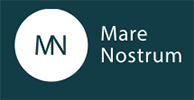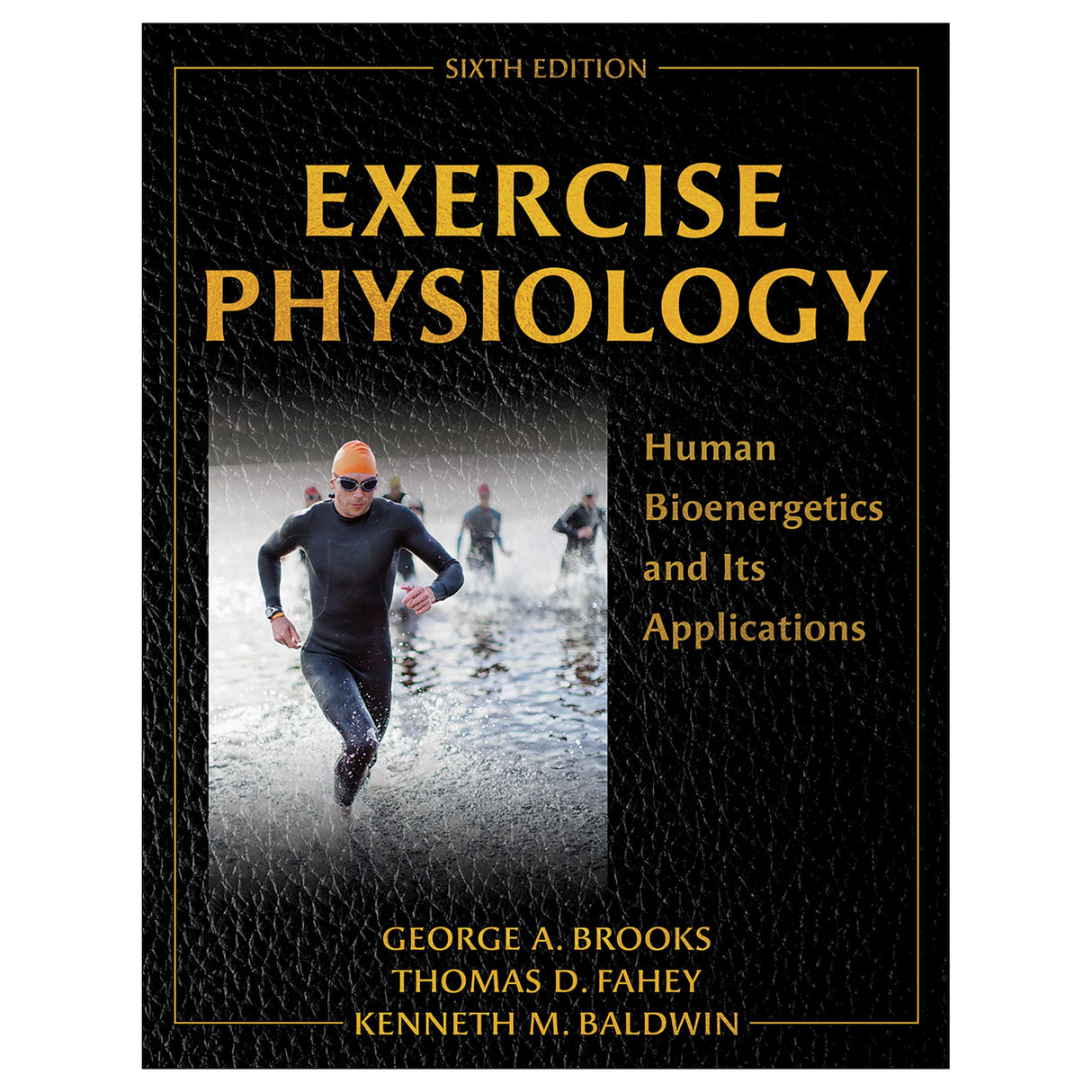Exercise Physiology-6th Edition
Human Bioenergetics and Its Applications
This title will be released on February 27, 2026
$160.00 USD
The essential text for graduate students studying exercise physiology.
Exercise Physiology: Human Bioenergetics and Its Applications, Sixth Edition, provides advanced exercise physiology students with the high-level background information needed to excel in the field of exercise physiology. With guidance from expert authors at the forefront of exercise physiology, explore the interrelationship of exercise, metabolism, and energy storage.
With special attention devoted to revisions that add clarity and consistency throughout the text, the sixth edition also contains a wealth of other updates:
- More information on the lactate shuttle theory—from lead author George Brooks, the developer of the concept
- Updated content covering metaboreflex, lipid metabolism, and pulmonary ventilation
- Expanded discussion of the control of gene expression of muscle protein
- New content on diseases and guidelines on prevention and management
- Updated information on metabolite homeostasis
Often referred to as the “bible of the field,” Exercise Physiology: Human Bioenergetics and Its Applications unpacks the principles of bioenergetics, taking readers through the mechanisms of performance as determined by physical and chemical factors. The evolution of exercise physiology as a field is traced back through history, framing present-day breakthroughs through the lens of historical practices. Readers will investigate the capabilities and limits of human physical function, examining exercise not just from a high-performance perspective but also in terms of health benefits.
The text has added pedagogical learning aids that make engaging with the content easier, such as chapter objectives, chapter summaries, and review questions. Original figures and tables from the authors encourage critical thinking and help with the practical application of concepts in the book.
Students can rest assured that they are learning from legends with the sixth edition of Exercise Physiology: Human Bioenergetics and Its Applications. With updated content and new breakthroughs, as well as the book’s reputation as a must-use resource, this text is the best choice for graduate students in exercise physiology.
Audience
Upper-division-undergraduate- and graduate-level exercise physiology students, health care professionals and athlete trainers, and researchers and other practitioners in exercise physiology.
Part I. Energy Systems
Chapter 1. Introduction
History of Exercise Physiology
Rate-Limiting Factors
Maximal Oxygen Consumption
Performance and Predictors of Performance
Stress and Strain
Overload Principle
Professional Field of Exercise Physiology and Exercise and Sports Science
Physical Activity and Health: Reports, Guidelines, and Recommendations
Chapter 2. Bioenergetics
Heat, Temperature, and Biological Systems
Laws of Thermodynamics
Adenosine Triphosphate
Chapter 3. ATP Homeostasis
Nonoxidative Immediate Energy System
Nonoxidative Glycolytic and Glycogenolytic Energy Systems
Oxidative Energy System
Energy Systems and Performance
Enzymatic Regulation of Metabolism
Adenylate Energy Charge
Energy Supply and Use During Physical Exercise Within the Context of Energy Flow in the Biosphere
Chapter 4. Basics of Metabolism
Energy Transduction in the Biosphere
Metabolism and Heat Production in Animals
Early Attempts at Calorimetry
Open-Circuit Calorimeters
Respiratory Gas Exchange Ratio
Indirect Calorimetry
Chapter 5. Glycolysis and Glycogenolysis
Glycolysis
Dietary Sources of Glucose
Postprandial Lactate Shuttle
Blood Glucose Concentration During Rest and Exercise
Glycolysis in History
Glycogenolysis
Cell–Cell Lactate Shuttle
Gluconeogenesis
Effects of Training on Glycolytic Enzyme Abundances and Glycolysis
Glucose, Glycogen, and Other Substrate Use During Exercise
Effects of Exercise and Endurance Training on Blood Lactate
Chapter 6. Cellular Oxidation of Pyruvate and Lactate
Structure of the Mitochondrial Reticulum
Connectivity of the Mitochondrial Reticulum
Krebs Cycle
Electron Transport Chain
Effects of Training on Skeletal Muscle Mitochondrial Protein
Training Adaptations and Coordination of Mitochondrial and Nuclear Genes
Muscle Mitochondrial Oxygen Partial Pressure During Exercise
Free Radicals, Reactive Oxygen Species, and Oxidative Damage
Chapter 7. Lipid Metabolism
Lipid Structure
Esterification and Hydrolysis
Dietary Lipids
Free Fatty Acid Blood Levels
Intramuscular Triglycerides and Lipoproteins as Fuel Sources
Exercise Recovery and Lipid Oxidation Timing
Mitochondrial Adaptation to Enhance Fat Oxidation
Glucose–Fatty Acid (Randle) Cycle
Crossover Concept
Energy Substrate Shunting and Shuttling During Exercise
Ketones as Fuels
Chapter 8. Protein and Amino Acid Metabolism
Amino Acid and Protein Structure
Dietary Proteins
Amino Acid Pools
Gluconeogenic Amino Acids
Branched-Chain Amino Acids
Glucose-Alanine Cycle
Glutamate and Glutamine as Ammonia Scavengers
Proteomics, Metabolomics, and Fluxomics
Chapter 9. Neuroendocrine Control of Metabolism
Hormonal Control of Glycemia
Hepatic Control of Glycemia
Autonomic Nervous System and Catecholamine Control of Glycemia
Endocrine Control of Gluconeogenesis
Chapter 10. Metabolic Response to Exercise
Validity of Indirect Calorimetry in Measuring Exercise Responses
Principles of Tracer Methodology
Muscle as a Consumer of Lactate During Exercise
Excess Postexercise Oxygen Consumption (EPOC), or the O2 Debt
Historical O2 Debt Theory
Metabolic Fate of Lactate After Exercise
Exercise-Related Disturbances to Mitochondrial Function
Lactate Turnover During Exercise
Part II. Physiological Systems
Chapter 11. Pulmonary Ventilation
Breathing, Ventilation, and Respiration
Environmental Influences on Pulmonary Gas Volumes
Entry of O2 Into Blood
Pulmonary Diffusion
Red Blood Cells and Hemoglobin in CO2 Transport
Bicarbonate Buffer System
Chapter 12. Mechanics of Pulmonary Ventilation
Pulmonary Anatomy
Partial Pressures
Control of Tidal Volume and Breathing Frequency
Neural-Humoral Control of Ventilation
Chapter 13. Ventilation as a Limiting Factor
Ventilatory Perfusion Ratio (VE/Q)
Ventilatory Equivalent of Oxygen (VE/VO2) During Exercise
Maximum Expiratory Minute Ventilation Versus Maximum Voluntary Ventilation
Partial Pressures of Alveolar and Arterial Oxygen
Alveolar Surface Area for Gas Exchange
Fatigue of Ventilatory Muscles and Other Limitations
Pulmonary Limitations in Highly Trained Athletes
Chapter 14. Mechanics of the Heart
Structure of the Heart
Regulation of Cardiac Chronotropy and Inotropy
Myocardium Electrical Activity and Measurement
Cardiac Performance at Rest and During Exercise
Chapter 15. Circulation and Its Control
Mechanics of Circulation
Determinants of Blood Flow
Neural Control of the Heart
Neural Control of the Cardiovascular System
Hormonal Control Mechanisms
Metabolic Regulation of Blood Flow
Autoregulation
Cardiovascular Control During Exercise
Redistribution (Shunting) of Blood Flow During Exercise and Other Forms of Cell Work
Chapter 16. Cardiovascular Dynamics and Exercise
Cardiovascular Responses to Exercise
Limits of Cardiovascular Performance
Changes in Cardiovascular Parameters With Training
Chapter 17. Skeletal Muscle Structure and Contractile Properties
Structure of Skeletal Muscle
Steric Block Model
Crossbridge Cycle Models
Length–Tension Relationship
Isometric Contractions
Force–Velocity Relationship
Chapter 18. Nervous System Control of Movement
Structure of the Nervous System
Excitability of Neurons
Neuromuscular Transmission
Excitation–Contraction Coupling
Muscle Fibers and Motor Unit Recruitment
Integrative Control of Movement
Motor Control Process
Part III. Adaptations to Exercise and Environment
Chapter 19. Principles of Skeletal Muscle Adaptations
Myoplasticity
Muscle Fiber Types in Elite Athletes
Muscle Adaptations in Response to Endurance Training
Muscle Adaptations in Response to Resistance Training
Muscle Adaptations in Response to Decreased Physical Activity
Muscle Adaptations in Response to Injury
Sex Differences in Skeletal Muscle
Age-Associated Changes in Skeletal Muscle
Chapter 20. Muscle Strength, Power, and Flexibility
Classification of Strength Exercises
Muscle Adaptation to Progressive Resistance Exercise
Components of Muscle Strength
Delayed Onset Muscle Soreness
Progressive Resistance Training Programs
Flexibility Training
Chapter 21. Endurance Training Principles
Historical Perspective
Human Genotypes and Phenotypes
Overload, Stimulus, and Response
Three Components of a Training Session
Specificity, Skill Acquisition, and Developing Metabolism
Over-Distance Training
Interval Training
Training Variation and Peaking
Volume Versus Intensity of Training
Peripheral Versus Central Limitations
High-Altitude Training
Methods of Evaluating Training Intensity
Planning a Training Schedule
Chapter 22. Temperature Regulation and Exercise in Heat and Cold
Normal Body Temperature
Heat Transfer
Heat Production Mechanisms
Heat Loss Mechanisms
Temperature Regulation and the Hypothalamus
Exercise in the Cold
Exercise in the Heat
Thermal Stress and Heat-Related Illnesses During Exercise
Chapter 23. Atmospheric Pressure, Air Pollution, Travel, Space, and Exercise
Altitude
Hyperbaria
Biological Rhythms and Travel Across Time Zones
Air Pollution
Space Physiology
Part IV. Exercise and Performance Factors
Chapter 24. Exercise Testing and Prescription
Medical Screening Before Beginning an Exercise Program
Understanding METs and MET-Minutes
Maximum Oxygen Consumption and Functional Capacity
Measuring Maximum Oxygen Consumption
Tests of Functional Capacity
VO2max Field Tests
Health Benefits of Physical Activity
Chapter 25. Cardiovascular Diseases
Sudden Cardiac Death and Exercise
Atherosclerosis Development
Lipoproteins
Hypertension
Heart Failure
Coronary Artery Disease Risk Factors
Cardiac Rehabilitation
Chapter 26. Obesity and Body Composition
Body Composition
Obesity and Health
Energy Balance
Obesity Treatment
Chapter 27. Disease and Disability
Chronic Diseases
Pulmonary Disorders
Immunity and Infection
Mental Health Disorders
Physical Disabilities
Bed Rest and Deconditioning
Chapter 28. Nutrition and Athletic Performance
Nutritional Practice in Athletics
Macronutrient Reports
Muscle and Dietary Carbohydrate
Amino Acid Role in Exercise
Lean Tissue Maintenance and Accretion
Fat Utilization During Exercise
Precompetition Meals
Fluid, Energy, and Electrolyte Ingestion During and After Exercise
Balanced Diet
Special Dietary Needs and Supplements
Chapter 29. Ergogenic Aids
Banned Substances
Hormonal Ergogenic Aids
Stimulants
Nutritional Ergogenic Aids and Supplements
Blood Manipulation
Gene Doping
Chapter 30. Sex and Gender Considerations
Physiological Sex Differences
Exercise and the Menstrual Cycle
The Female Athlete Triad
Exercise and Pregnancy
Chapter 31. Growth and Development
The Growth Process in Humans
Neuroendocrine Control of Growth
Exercise, Sports, and Growth
Skeletal Development During Growth
Body Composition Changes During Growth
Changes in Cardioventilatory and Metabolic Function
Developmental Responses to Training
Chapter 32. Aging
Aging Effects and Mortality
Cardiovascular Capacity
Pulmonary Function
Bone Density
Joint Health
Skeletal Muscle
Body Composition and Stature
Neural Function
Aging Theories and Exercise Effects
Exercise Prescription for Older Adults
Chapter 33. Fatigue and the Limits of Performance
Identifying Fatigue
Metabolite Depletion
Metabolite Accumulation
Oxygen Depletion and Muscle Mitochondrial Density
Central and Neuromuscular Fatigue
Psychological Fatigue
Heart Muscle Fatigue
VO2max and Endurance
Fatigue Research Technology
All ancillaries are free to adopting instructors through HKPropel.
Instructor guide. Includes sample lecture outlines.
Test package. Contains 990 questions in true-false, fill-in-the-blank, essay and short-answer, and multiple-choice formats. The files may be downloaded for integration with a learning management system or printed for use as paper-based tests. Instructors may also create their own customized quizzes or tests from the test bank questions.
Chapter quizzes. Contains ready-made quizzes (9-10 questions each) to assess student comprehension of the most important concepts in each chapter.
Presentation package. Features more than 660 PowerPoint slides of text, artwork, and tables from the book that can be used for class discussion and presentation. The slides in the presentation package can be used directly within PowerPoint or printed to make handouts for students. Instructors can easily add, modify, and rearrange the order of the slides.
Image bank. Includes most of the figures, content photos, and tables from the text, sorted by chapter. These can be used in developing a customized presentation based on specific course requirements.





